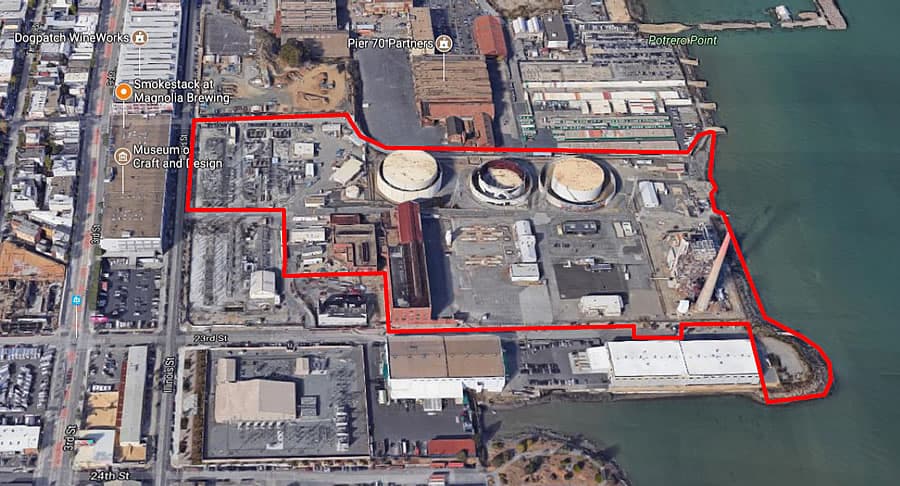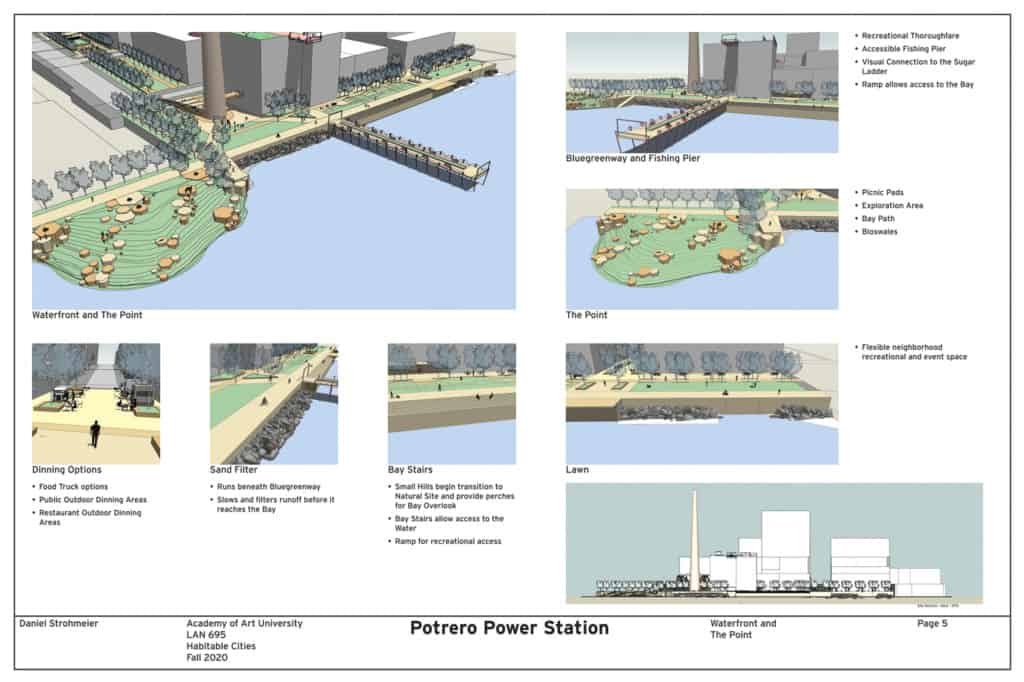One would think that to come up with a feasible landscape architecture design, the designer must have physical access to the space. Given the ongoing situation, however, this isn’t quite possible.
Students at Academy of Art University’s School of Landscape Architecture aren’t about to let this limitation keep them from putting out good work. They proved exactly just that last semester when they created and presented designs for the Potrero Power Station.

This juggernaut of a city project was first approved by Mayor London Breed last spring, which involves the redevelopment of a 29-Acre complex on 23rd Street. Within this complex are over six more acres of public parks, various recreational areas and tourist spots, waterfront access to the Dogpatch neighborhood, and not to mention the 2,400 residential housing units in it.
Dealing with a Giant Project Online
Both undergraduate and graduate students in School of Landscape Architecture’s LAN 498/695 Habitable Cities class took full advantage of the immersive design studios application. Said director Jeff McLane, who was personally handling the class, “This is the most complex studio we’ve ever run.”
And for very good reasons too. Not only did they have to deal with such a huge amount of space, it was specifically public open space, which meant that they had to closely coordinate with local regulatory agencies.
Among those that had to be brought into the Zoom sessions to talk to the students for better context were representatives from the Bay Conservation and Development Commission (BCDC), the Port of San Francisco, and the city planning department. Also getting involved to check in on the progress of the concept designs were the City Historian, the SF Parks Alliance, and the landscape architects handling the project.
“The great thing about the Zoom class was that it made access to different perspectives easy, and that was a big thing. There was this kind of real-world feedback.”

Another unique aspect of this online class was the combination of the undergraduate and graduate students. Fortunately, this yielded more favorable results than challenges. While the presentations for the Potrero Power Station design were meant to be individual work, the students were free to discuss and collaborate with each other, thus essentially going through the process together.
“Having everyone together and working together toward the same goal pushed their skill levels,” observed McLane. “They were constantly confronted with their own limitations, which is how you learn. There’s a rigor to design that you have to establish in yourself to be successful, and I think they did that.”
Practical Learning through Firsthand Information
For students who have never touched on a project of this scale, it was understandably overwhelming and intimidating. One thing was clear, though: the fact that they can even be able to experience this kind of project while studying right in the heart of a location filled with practical application opportunities is an experience that should not be missed.
Apart from direct access to locations that are examples of great landscape architecture work, students also heard directly from those personally responsible for the designs. In this case, it was Haley Waterson, co-founder and principal designer of Plural Studio, and also the man who sketched out the final power station site plans.
The students also had access to the main document, the Design for Development (D4D), so they can see the full outline of the site’s development.
“The students really had to download as much as they could, to at least absorb the pieces of the open space, understand the building massing and use, which takes quite a bit of time,” Waterson explained.
“In general, understanding the scale of the whole development was really challenging and each student found their own way through it and responded to it differently, and that was interesting to see.”
The Final Presentation
On December 18, 2020, the students made their presentations for the final class review. The most prominent themes in their works were that of power and energy. Giving acknowledgment to the history of the location also stood out.
For graduate student Daniel Strohmeier, the rich industrial history of the power station deserves to be preserved, and so found ways to incorporate it in his community-oriented master plan. “I really wanted to bring in that neighborhood character. The efficiency of industrial architecture was the real inspiration of the site because what we’re doing is really embracing the leftover elements, like the stack building.”

Meanwhile, undergraduate student Christie Choy also wanted to bring in the element of balance.
“This site is basically a whole new neighborhood they’re building in San Francisco,” she explained. “For this project, I wanted to lay out functionality and find elements that tie them together into a concept. Consistency and balance are [some] of the most challenging things but studio projects like these help us think through our design process and find the right, or most sensible, solution.”

Article by Nina Tabios originally published in ArtU News